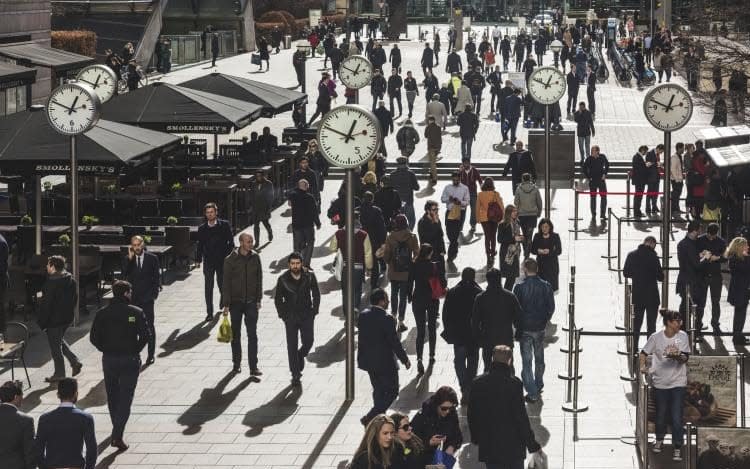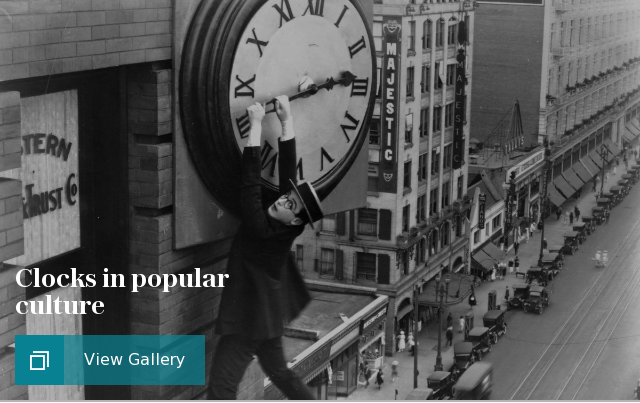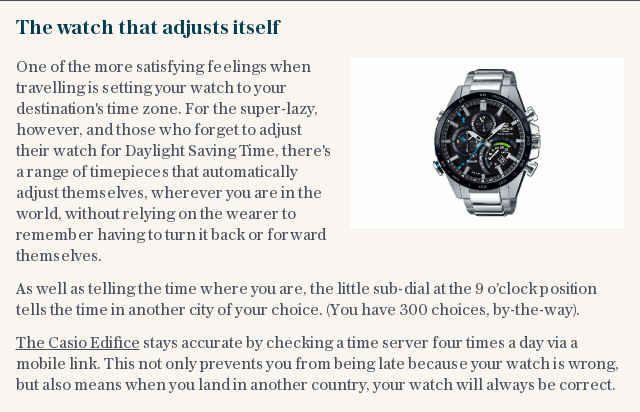When do the clocks change, why do we use GMT – and do we still need to?

October has arrived; the leaves are turning, the temperatures are dropping and the mornings are gradually becoming lighter later.
In just a couple of weeks time, the clocks will change, meaning we will have a blissful extra hour in bed. But why do we still have to go through the clock-changing rigmarole?
From Sandringham Time to why we even have Daylight Saving Time in the first place, here's everything you need to know about the autumn time change.
When did the clocks go back?
This year the clocks will go back in the early hours of Sunday October 28; at 2am, the UK will revert to Greenwich Mean Time (GMT) by going back one hour, to 1am. This will mark the official end of British summertime. A clever way to remember the hour-change rule is "Spring forward, Fall back".
Relish those extra 60 minutes in bed. The mornings will also be lighter (for now, at least), however the evenings will be darker.
And bear the event in mind when making plans for the day: despite the prevalence of smartphones and other devices which alter the time for you automatically, there will always be one person you know who didn't get the memo.
When will the infernal darkness end..?
We won't see lighter nights again until Sunday March 31st 2019, when the clocks will wind forward again at 1am and British Summer Time begins.
How dark does the UK get in winter?
In the UK the maximum 16 hours and 50 minutes of daylight falls on the longest day in June - also known as the summer solstice. On the shortest day, Thursday December 21, this will dwindle to just seven hours and 49 minutes when the sun rises at 8:03am and sets at 3:53pm in London.
Daylight Saving: Whose idea was it?
Edwardian builder William Willett introduced the idea of British Summer Time, also known as Daylight Saving Time, in 1907. Coincedentally, Willett is a great-great-grandfather of Coldplay lead singer Chris Martin.
A keen supporter of the outdoors, he noticed that during the summer people were still asleep when the sun had risen and wanted to stop Brits from wasting valuable daylight hours. Back then the clocks were set to Greenwich Mean Time (GMT) meaning it was light by 3am and dark at 9pm midsummer.
Willett published a pamphlet called 'The Waste of Daylight' in a bid to get people out of bed earlier by changing the nation’s clocks, arguing it would not only improve health and happiness but it would save the country £2.5 million.
He proposed that the clocks should be advanced by 80 minutes in four incremental steps during April and reversed the same way during September. However, his idea was ridiculed and the Daylight Saving Bill got nowhere in Parliament when it was introduced in 1909.
Willett, however, would not be deterred. He spent the rest of his life trying to convince people his scheme was a good one. Sadly, he died of the flu in 1915 at the age of 58; a year before Germany adopted his clock-changing plan on April 30, 1916 when the clocks were put forward at 11pm.
Britain followed suit a month later on May 21 and Belgium, Denmark, France, Italy, Luxembourg, Netherlands, Norway, Portugal, Sweden, and Turkey all followed.

By then Britain and Germany had been fighting each other in the First World War (1914-18), and a system that could take pressure off the economy and conserve fuel was worth trying.
The Summer Time Act of 1916 was quickly passed by Parliament and the first day of British Summer Time, 21 May 1916, was widely reported in the press.
Back then the hands on many of the clocks could not be turned back without breaking the mechanism. Instead, owners had to put the clock forward by 11 hours when Summer Time came to an end on 1 October 1916.
The Home Office put out special posters telling people how to reset their clocks to GMT and national newspapers also gave advice.
Willett, who died at his home near near Bromley in Kent, is commemorated for his efforts by a memorial sundial in nearby Petts Wood, set permanently to Daylight Saving Time.
The Daylight Inn in Petts Wood is named in his honour and there's a road there called Willett Way.
Willett wasn't alone in realising the potential of utilising wasted daylight hours. As far back as 1784, Benjamin Franklin, one of America's Founding Fathers, had written a letter to the Journal of Paris making fun of the fact people were sleeping through daylight and burning candles and fuel for light at night. Franklin even suggested a tax on shuttered windows and public alarm clocks to solve the problem.
Has the time difference always been one hour?
Today clocks are almost always set one hour back or ahead, but throughout history there have been several variations, like half adjustment (30 minutes) or double adjustment (two hours), and adjustments of 20 and 40 minutes have also been used. A two-hour adjustment was used in several countries during the 1940s and elsewhere at times.
A half adjustment was sometimes used in New Zealand in the first half of the 20th century. Australia's Lord Howe Island (UTC+10:30) follows a DST schedule in which clocks are moved 30 minutes forward to UTC+11, which is Australian Eastern Daylight Time (AEDT) during DST.
In 1940 during the Second World War, the clocks in Britain were not put back by an hour at the end of Summer Time. In subsequent years, clocks continued to be advanced by one hour each spring and put back by an hour each autumn until July 1945. During these summers, therefore, Britain was two hours ahead of GMT and operating on British Double Summer Time (BDST).
The clocks were brought back in line with GMT at the end of summer in 1945. In 1947, due to severe fuel shortages, clocks were advanced by one hour on two occasions during the spring, and put back by one hour on two occasions during the autumn, meaning that Britain was back on BDST during that summer.

Arguments for ditching Daylight Saving Time
Those against the change say it's not clear if any energy savings are made, while there are also potential health risks.
Critics claim that the darker mornings are dangerous for children walking to school and the energy saving argument may be invalid if people switch on fans and air-conditioning units during the lighter, warmer evenings. (But this is unlikely to bother people in the UK.)
In 2011, Tory MP Rebecca Harris floated a bill calling for year-round daylight savings but it failed to complete its passage through Parliament before the end of the session and was dropped.
A YouGov poll that same year found that 53pc of Britons supported moving clocks forward an hour permanently while 32pc opposed the change. The proposals were met less warmly by the Scottish population; Alex Salmond called the campaign an attempt to “plunge Scotland into morning darkness" and his SNP colleague MP Angus MacNeil said any change would have "massive implications for the safety and wellbeing of everyone living north of Manchester".
"It is no secret that Tories in the south want to leave Scotland in darkness, but fixing the clocks to British summertime would mean that dawn wouldn't break in Scotland until nearly 9am," he said.
He had a point. Following a 1968 to 1971 trial, when BST was employed all year round northern Scotland saw a net increase in the number of people killed or seriously injured.

The sun wouldn’t rise fully until 10am in parts of Scotland and the country’s 1,000-or-so dairy farmers, who wake up before 5am, would have to work for hours in the dark. Other farmers and construction workers, who need sunlight to perform their jobs, would end up having to work later into the evening.
Some folks keen to reach a compromise have suggested the clocks change at Hadrian's Wall and not at Calais.
Philip Broom writing on the National Farmer's Union website in 2011 said: "A definite no. Combining will not start until midday and then have to go on until 11 o’clock. Our day is long enough now."
'A Thomas', also writing on the NFU site, was worried that "younger people having loud parties or barbecues in gardens and youths hanging around on streets would make it a nightmare for people getting up for work early mornings."
A massive wind-up for some...
Spare a thought for the staff of the Royal Collection. They spend over 50 hours adjusting over 1000 clocks spread across the official residences of The Queen.
Following months of planning, staff at Buckingham Palace, Windsor Castle and the Palace of Holyroodhouse in Edinburgh start work in the early hours of the morning to ensure that the time is set accurately.
There are 379 timepieces at Windsor Castle, 500 at Buckingham Palace and 80 at the Palace of Holyroodhouse including organ clocks, astronomical clocks, musical clocks and mechanical clocks.

Why we should keep Daylight Saving Time
There have been various trials over the decades from double summer time (GMT + 2 hours) during the Second World War to permanent British Summer Time (GMT + 1 hour) during the late 1960s but the current system of changing the clocks at the end of March and October has been in place since 1972.
Those in favour say that it would reduce traffic accidents, save energy, boost tourism and encourage more people to exercise outdoors. In the 1980s, the golf industry estimated that one extra month of daylight savings could generate up to $400 million (£246.6 million) a year in extra sales and fees.
Daylight Savings Time “affects everything from terrorism to the attendance at London music halls, voter turnout to street crime, gardening to the profits of radio stations,” said David Prerau, author of Saving the Daylight: Why We Put the Clocks Forward.
This debate stretches years into the past, and the future of British time is still unclear.
Sandringham Time - GMT+30mins
An added complication for Royal servants between the years 1901 to 1936 was the concept of 'Sandringham Time' which was introduced in by Albert, Prince of Wales, later King Edward VII. A keen fan of shooting, he wanted to make the most of winter daylight, so he ordered all clocks on the estate to be set half an hour fast.
The tradition was continued by King George V after he acceded to the throne in 1925 but King Edward VIII abolished it in 1936 shortly before his abdication.

Coping with the time change
When the clocks first go back, mornings are lighter so ensure bedrooms are kept dark with blinds or curtains.
Alter bedtime by around 10 minutes over a few days beforehand to adjust to the new time.
Maintain bedtime routines. Get ready for bed in the same order e.g pyjamas on, tooth brushing, bedtime story.
Turn off all screens at least an hour before bedtime.
Offer a milky, warm drink to encourage sleepiness and avoid stimulating food and drink just before sleep.
Make sure all the clocks are correct. Don't make this mum's mistake

 Yahoo News
Yahoo News 
